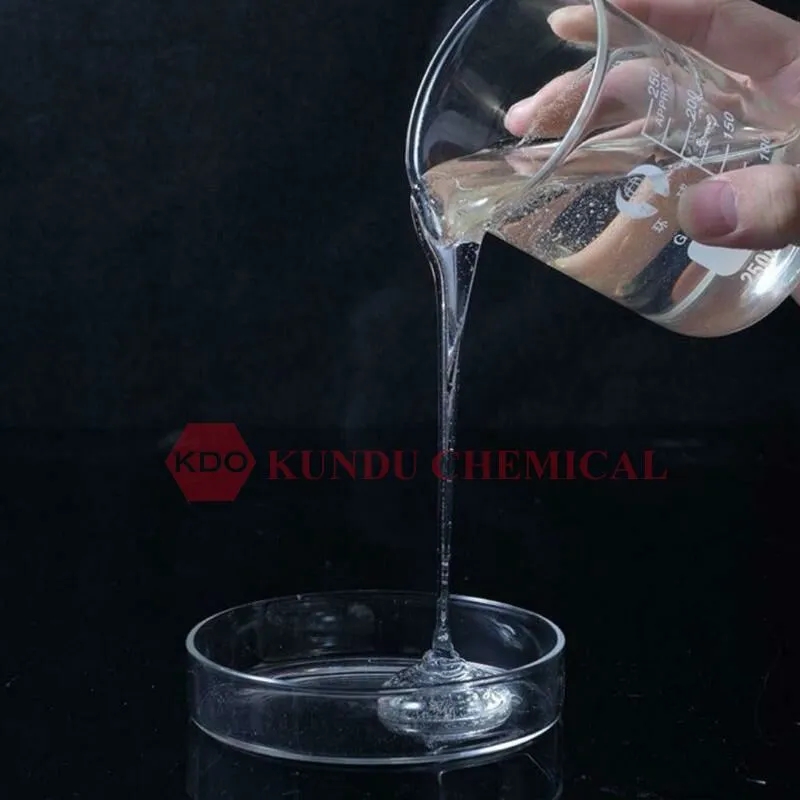- Time:2024/2/1Posted:SHANDONG KUNDU CHEMICAL CO.,LTD.
When considering chemical raw materials, numerous options are available for selection. Two widely favored choices in the industry include Hydroxyethyl Cellulose (HEC) and Hydroxypropyl Methyl Cellulose (HPMC). Both are cellulose derivatives with distinct properties and advantages tailored for diverse applications. In this article, we will delve into the distinctions between HEC and HPMC to assist you in identifying the optimal choice for your specific requirements.
HEC and HPMC: Overview
HEC, short for Hydroxyethyl Cellulose, a non-ionic water-soluble polymer derived from cellulose. Widely employed in the chemical industry, as an effective thickener, binder, and stabilizer, attributed to its remarkable water retention and film-forming properties. Common applications include its use in coatings, adhesives, and personal care products.
HPMC, short for Hydroxypropyl Methyl Cellulose, is another water-soluble cellulose derivative. It finds widespread use in the pharmaceutical, food, and construction sectors owing to its capacity to enhance solubility, viscosity, and stability. HPMC is a key component in products like tablet coatings, food coatings, and cement-based materials.

Properties
While both HEC and HPMC are cellulose derivatives, several crucial distinctions can influence their appropriateness for specific applications.
1. Viscosity: HEC is renowned for its high viscosity, making it well-suited for applications like coatings and adhesives that demand a thick, adhesive consistency. Conversely, HPMC possesses lower viscosity than HEC, rendering it more fitting for applications requiring a thinner, more flowable texture.
2. Solubility: HEC is soluble in both hot and cold water, while HPMC is more soluble in cold water. This can impact their use in various applications, as some formulations may require a specific solubility profile.
3. pH Range: HEC boasts a broader pH range compared to HPMC, rendering it more suitable for applications requiring stability across a wider pH spectrum. Conversely, HPMC excels in acidic conditions, making it preferable for applications demanding stability under acidic circumstances.
4. Film-Forming Properties: HEC demonstrates excellent film-forming properties, particularly beneficial for coatings and adhesives. In contrast, HPMC exhibits inferior film-forming properties, making it less suitable for these applications.
5. Cost: HEC typically incurs higher costs than HPMC, potentially influencing its suitability for certain applications.

HPMC VS HEC : Application
Application: Hydroxypropyl Methyl Cellulose can be used in coatings, ceramics, printing inks, plastics. HPMC has construction grade, food grade, and pharmaceutical grade according to the application. Low-viscosity Hydroxypropyl Methyl Cellulose is mainly used for self-leveling mortar. Its viscosity is low, although its water retention is poor. HPMC's leveling property is good, and the mortar is dense. Medium and low-viscosity HPMC is mainly used in tile adhesives, joint fillers, anti-cracking mortars, and thermal insulation mortars. It has good constructability, a good water retention effect, and high mortar density. HPMC exists as a water-retaining agent in mortar. Its water-retaining properties prevent the paste from drying too quickly. And cracking after reapplying.
HEC is the binder, surfactant, colloidal protective agent, dispersant, emulsifier, dispersion stabilizer. Hydroxyethyl Cellulose mainly apply to the coating industry. Hydroxyethyl Cellulose is more stable than Hydroxypropyl Methyl Cellulose for emulsion thickening.
HPMC VS HEC: In Paint Applications
When deciding between HEC and HPMC for paint applications, several factors merit consideration:
1. Rheology: Both HEC and HPMC serve as rheology modifiers in paint formulations, but their effects differ. HEC excels in thickening the paint, elevating viscosity, while HPMC is adept at imparting shear-thinning behavior, enhancing flow, and promoting leveling.
2. Water Resistance: Opting for HPMC may be preferable if water resistance is a primary concern. Being more water-soluble than HEC, HPMC offers enhanced resistance to water washout.
3. Color Stability: If maintaining color stability is crucial, HPMC may be the superior choice, as it is less likely to induce color changes or fade over time compared to HEC.
4. Film Formation: For those aiming to create a film-forming paint, HPMC may be the preferred option, as it can establish a more continuous film compared to HEC.
5. VOC Content: If the goal is to reduce the Volatile Organic Compound (VOC) content of the paint, HEC may be the better choice, as it can be employed to diminish the amount of solvent required in the formulation.
Choosing the Right Cellulose Derivative
When faced with the decision between HEC and HPMC, several factors should be taken into account:
1. Viscosity and Solubility: Evaluate the viscosity and solubility requirements specific to your application. Opt for HEC if a thick, sticky consistency is essential, whereas HPMC may be preferable for a thinner, more flowable texture.
2. pH Range and Film-Forming Properties: Assess the pH range and film-forming properties necessary for your application. Opt for HEC if you require stability across a broader pH range or excellent film-forming capabilities. Conversely, HPMC might be more suitable if stability under acidic conditions is crucial or if less emphasis on film-forming properties is acceptable.
3. Cost and Availability: Consider the economic aspect and availability. If cost is a significant factor, HPMC may emerge as the more favorable choice.
Conclusion
In conclusion, comprehending these disparities in the manufacturing process aids in choosing the suitable cellulose derivative for your intended application. Both HEC and HPMC are valuable cellulose derivatives, each presenting distinctive properties and benefits across various applications. Familiarizing yourself with the distinctions between the two enables you to make an informed decision regarding the most suitable choice for your specific needs.





